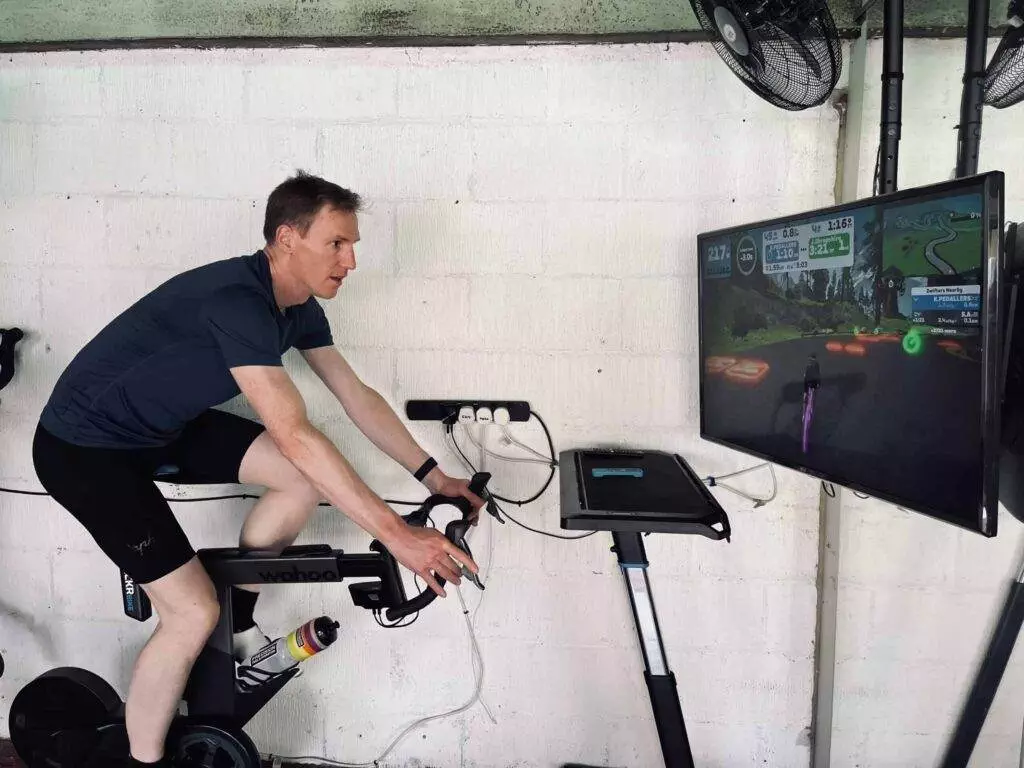Biking isn’t just a fun way to blow off steam – it’s also a great way to improve your overall fitness. Still, it may be even more effective when it’s used together with other fitness components.
In this article, we’ll explore the components of fitness and the specific component that cycling targets. We’ll also discuss how to add it to your current fitness routine and the benefits that biking offers.
So, grab your helmet and get ready to pedal your way to a healthier and fitter you!

Key Takeaways: What Component of Fitness is Biking?
- The five main components of fitness include: cardiovascular endurance, muscular endurance, muscular strength, flexibility, and body composition.
- Cycling targets cardiovascular endurance, improving your heart and lung health.
- Biking reduces your risk of cardiovascular diseases.
- Biking should be paired with cross-training for better fitness results.
- Always consult a doctor or professional before starting a new exercise routine.
The Components of Fitness
Picture physical fitness as a delicious pie where each slice represents a different aspect of fitness. Of course, you’ll want to have all these slices come together to create a well-rounded fitness experience.
Cardiovascular endurance
Also known as aerobic fitness, this refers to the ability of the cardiovascular system to supply oxygen to your muscles. This is usually done during sustained physical activity. As a cyclist, cardiovascular endurance is essential.
It can help with powering your rides and makes it easier to tackle challenging terrains and long distances.
Muscular endurance
Muscular endurance measures the ability of a muscle group to perform repetitive contractions over a long period. It’s essential for sustained muscle activity in workouts like cycling, rowing, and hiking.
Muscular endurance is particularly important if you take part in longer events or go on longer endurance rides. It allows you to maintain a consistent pace while also preventing muscle fatigue.
Muscular strength
This component focuses on the amount of force a muscle group can generate in a single burst of maximum effort. Muscular strength is important for activities like lifting weights, pushing, and pulling.
Strengthening your leg muscles, particularly your quadriceps, and hamstrings, boosts your ability to pedal more efficiently. It can also help you to handle resistance on various terrains.

Flexibility
Flexibility refers to the range of motion around a joint. It also allows for muscles, tendons, and ligaments to stretch and enable proper movement.
Flexibility can help you to achieve the proper riding form. It makes it easier to assume a more aerodynamic position on your bike and can help to prevent muscle imbalances.
In fact, you can promote your cycling performance by adding stretching exercises like yoga into your workout routines.
Body composition
Body composition describes the proportion of fat mass, muscle mass, bone, and other tissues that make up your body weight. Maintaining a healthy body composition involves managing your body fat percentage and having a good amount of muscle mass.
A healthy body composition, with an appropriate balance of muscle and body fat, can improve your power-to-weight ratio. In turn, this helps you to ride more efficiently and climb hills and inclines with less effort.
Biking as Exercise
Whether you’re cycling outdoors with the wind in your hair or using a stationary bike indoors, cycling is a great way to improve your fitness. It can also get you into the habit of incorporating physical activity into your everyday routine – without feeling like you’re working out!
Cycling workouts can be fun and exciting while providing several health benefits. Of course, it’s a great way to get your heart rate up and improve the health of your cardiovascular system.
In fact, regular cycling can help strengthen your heart and improve blood circulation. This reduces your risk of cardiovascular disease.
Although cycling is a low-impact exercise, it can improve your bone mineral density when it’s paired with cross-training. You can also use cycling to lose weight, tone your muscles, and boost your mental well-being.
When you cycle, your body releases endorphins (‘feel-good’ hormones) that reduce your stress and improve your mood. So overall, biking is a great choice if you want an enjoyable and effective workout.

The Component of Fitness Targeted by Biking
Biking primarily targets cardiovascular endurance. This is a key component of great physical fitness. As a form of aerobic exercise, cycling challenges your cardiovascular system by increasing both your heart and breathing rate.
Biking improves your lung capacity and strengthens your heart muscle. Plus, it enhances your body’s ability to transport and use oxygen. Additionally, regular cycling sessions improve your endurance levels.
This means you’ll be able to endure longer bike rides without experiencing excessive fatigue.
Tips for Incorporating Biking into Your Fitness Routine
If you’ve never used cycling as part of your workout routine, it can be tricky to add it to your training plan. Luckily, these easy tips will help to ease the transition:
- Start gradually and increase the length and intensity of your rides over time.
- Explore different cycling routes to keep your workouts fun and interesting.
- Set realistic and achievable goals to help keep you motivated.
- Remember to supplement your cycling workouts with cross-training to improve your overall fitness.
- Joining a cycling group or having a buddy can make cycling more enjoyable. It can also help to keep you motivated and accountable for your workouts.
- If you want to get a feel for cycling before you commit to a full training program, try indoor cycling at one of your local fitness centers.

Consult with a Doctor or Trainer Before Starting a New Exercise Routine
It’s essential to consult with a doctor or trainer before you start any new exercise routine. This includes cycling! Doing this is important to ensure your safety and maximize the effectiveness of your workouts.
Plus, professionals can assess your body and its needs to tailor a workout plan that works for you.
When you consult with a professional, they can advise you on avoiding injuries and proper cycling techniques. This makes it easier for you to master your skills.

FAQs
Can biking improve other components of fitness?
Yes, biking can have a positive effect on other components of fitness. It can contribute to muscular endurance and physical fitness by targeting the major muscle groups in your legs for long periods of time.
How often should you bike to improve your fitness?
As a general guideline, you should aim to bike three to five times a week for at least half an hour each session. This will provide you with plenty of health benefits and boost your fitness.
However, it may be a good idea to consult with a professional trainer for a personalized plan if you have specific fitness goals.
